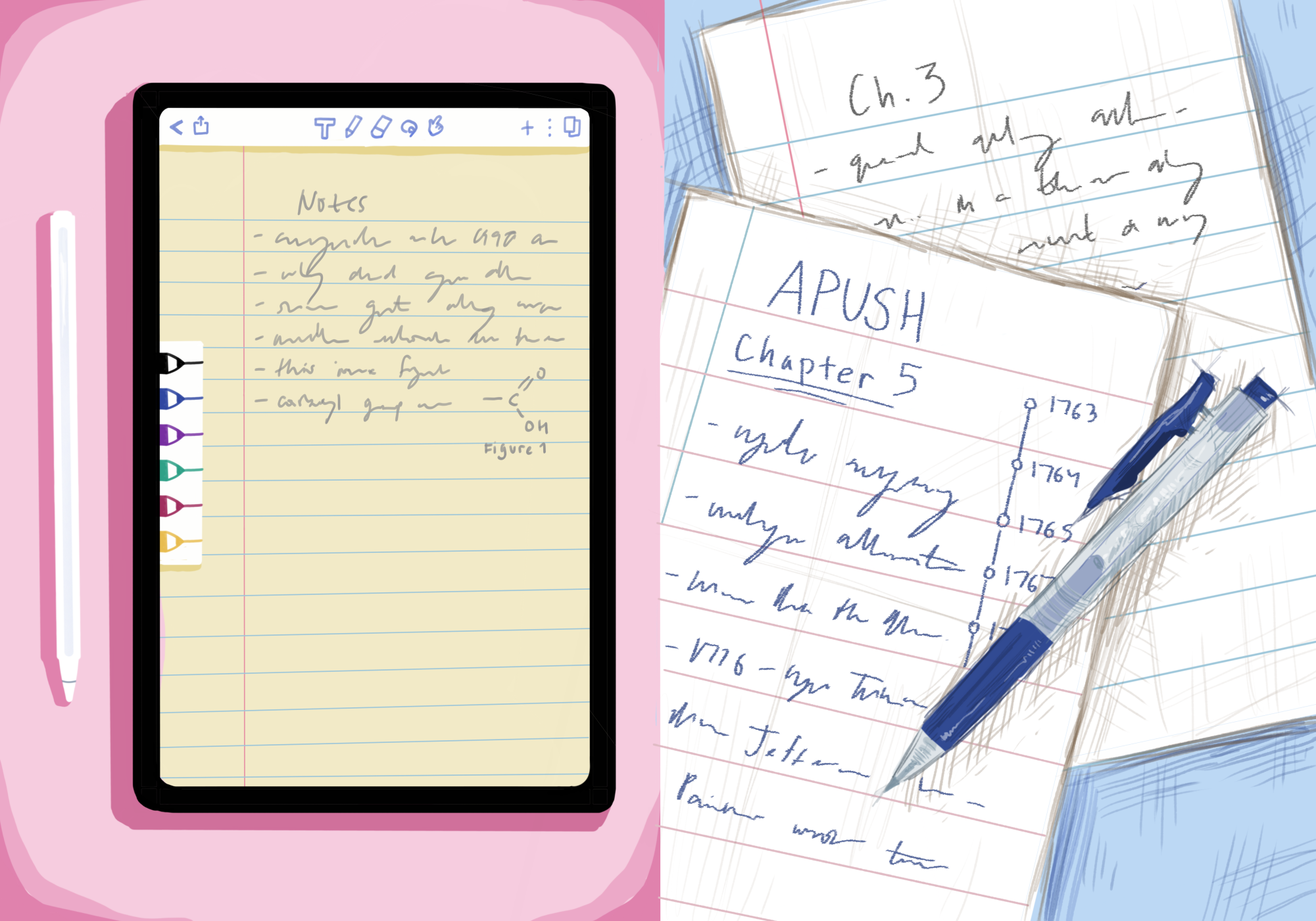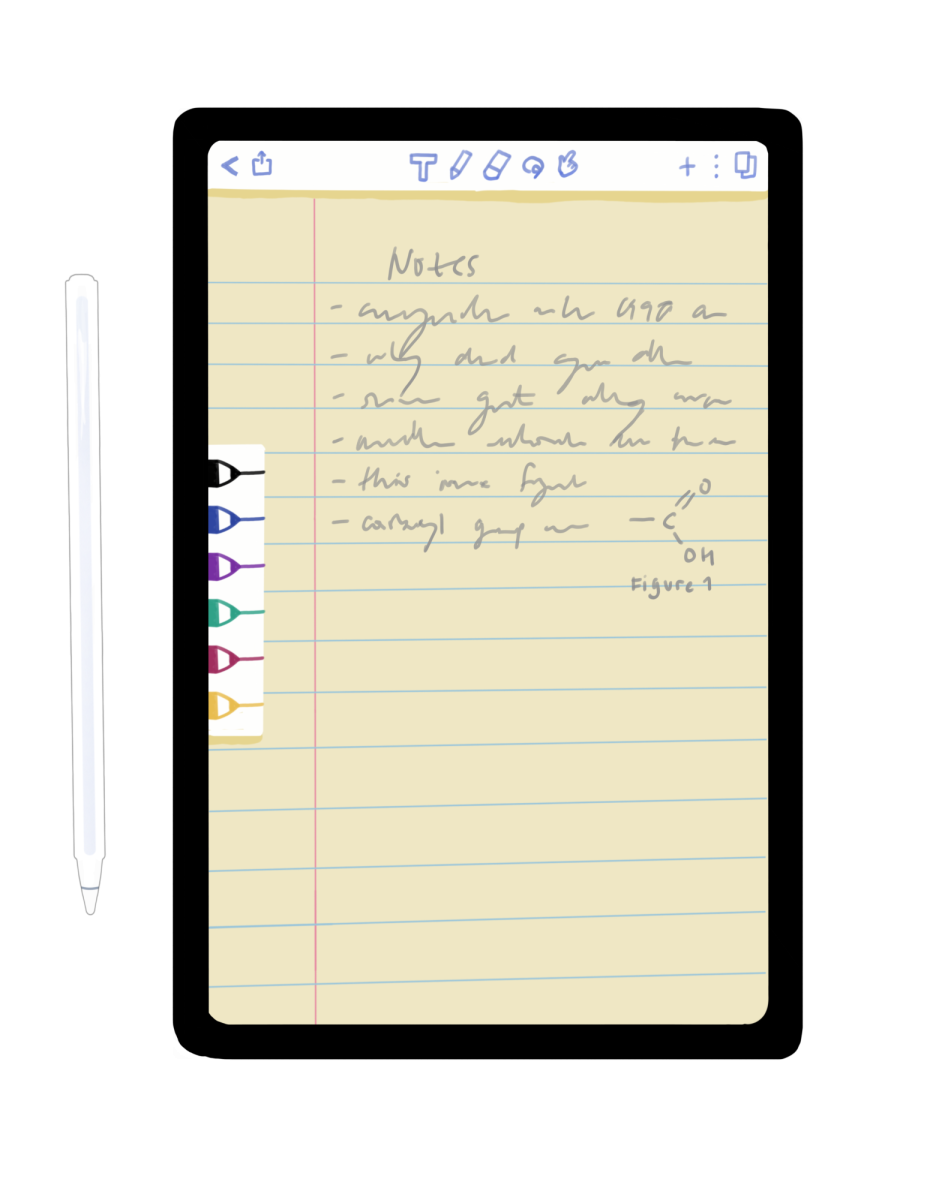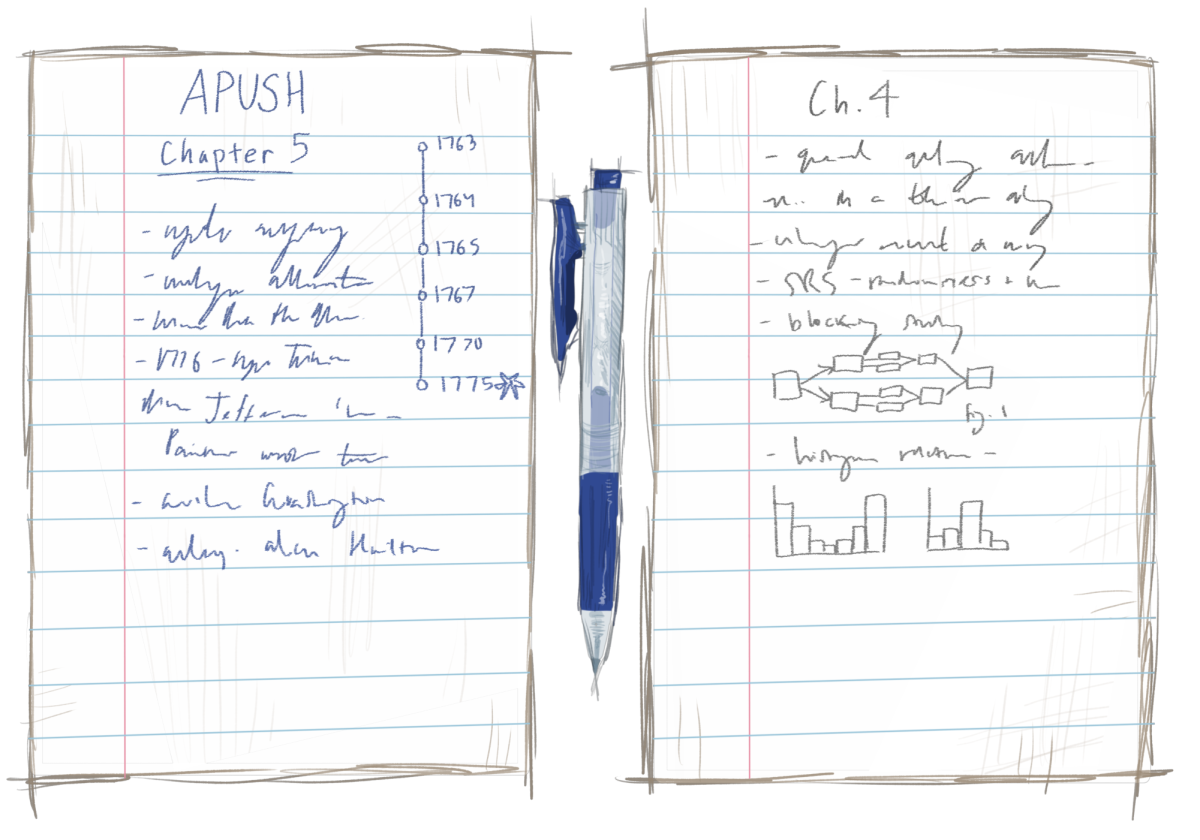Perspectives: iPad vs. paper notes
In biology class, I sit ready and prepared to learn with my notebook open to a fresh new page and my pencil sharpened to a perfect point. As my teacher starts to review the lecture notes, I begin to write slowly and patiently. Just a few minutes in, my pencil starts to dull; the graphite is smudged all over the page and my diagrams look messy and barely legible. I silently groan to myself, ripping out the page and crumpling it between my hands. I open my backpack and pull out my iPad, which is fully charged and ready for use. I launch Notability, grip my Apple Pencil in my hand and refocus my attention back on the lecture, refreshed and ready to take notes again.
A debate that has been going on since the Big Bang, paper notes versus iPad notes is always a contentious discussion. While some people prefer paper over an iPad, using an iPad to take notes is not only more efficient but also helps out with organization.
By using an iPad to take notes, you don’t need to bring six different notebooks for six different subjects, so your back doesn’t break every time you pick your backpack up. Many note taking apps, like Notability and Goodnotes, allow you to efficiently organize your notes by creating folders. There’s also no risk of losing your digital notes as most note taking apps save your notes on the Cloud.
While digitally taking notes, whether it be on a lecture or on a textbook chapter, I can effortlessly switch between pen and highlighter and even choose whatever color I want to write in. With paper, it takes more time to switch between different writing instruments, and even longer if you want to color-code your notes. Paper notes limit your creative freedom, especially when you have to keep up with the lecture in the classroom.
Using my iPad to write down information also comes in handy if I want to include diagrams or graphs. While using a ruler on paper is perfectly fine, the diagrams are often distorted and not drawn to scale, and I find myself stuck in an endless cycle of erasing, drawing and erasing again. On a tablet, I can just search up the concept on Safari and add the image to my notes, saving me both time and effort. As a result, my notes immediately become much cleaner and more aesthetic.
Beyond the organization and simplicity of digital notes, taking notes digitally is more enjoyable than working with paper. The feeling of my Apple Pencil gliding over the smooth surface of my tablet is something that can’t be beat, compared to the rough, scratchy surface of a paper notebook. I can add in any design I like, implement any writing medium and draw whatever I want — the possibilities are endless. The only limit is your imagination.
Lastly, while paper notes might help you with memorization in the short term, the iPad’s ability to add in neat drawings and diagrams could do much more. A 2016 study published in the National Library of Medicine shows that visual learning and explanations improve spatial ability as well as understanding. With a tablet, you can make the straightest of graphs, the neatest of diagrams. With paper, you can’t say the same.
Everyone has their own preferences and peeves when it comes to taking notes, but for me, taking notes using a tablet undoubtedly comes out on top. No matter where I am or what I want to do, my iPad is right next to my side. With its sleek simplicity and efficient organization, I’m always ready to learn.

It’s late at night. My laptop and iPad illuminate my face with a blue glow. I’ve finished the mountainous heap of homework upon me … well, almost. There’s a dull headache brewing between my temples, my eyes ache and, regrettably, there’s still one assignment left for me to complete: “Read and take notes on Chapter 3 of the textbook.” So, I mull over my options. I anticipate what’s in store for me right now and tomorrow morning. And finally, I whisper to myself: I can do it, as I unplug my devices and put them away for now. I’ve got this, as I take out my trusty spiral notebook and open it up to a fresh page.
Of course, when I say I prefer taking notes on paper over using my iPad, I can’t discount the convenience of using an iPad. After all, many teachers at the upper school allow or even encourage students to take notes on tablets. Notebooks and tablets may seem like two sides of the same coin. Paper and pencil, screen and stylus: what’s the difference, anyway?
A 2021 study published in “Frontiers in Behavioral Neuroscience” may offer an answer to that question. According to the scientists’ data, there is a difference between the spatial information offered by paper notebooks and by electronic tablets. University students who wrote on paper scored slightly better and also had higher activations in memory-related brain regions when asked to remember details from what they wrote compared to the tablet group.
In other words, paper helped these students encode information more effectively and thus store it or retrieve it from their memories more effectively. From experience, this comes in handy for memory-intensive academic subjects like history where I have to rely on note-taking to learn the content. At the end of a long Quizlet study session or right before a test, I still find it helpful to return to my physical notes as a way of refreshing my memory.
Taking notes on an iPad may be easy, but I always find myself one step away from becoming sidetracked by another app on my home screen. Notifications from group chats, new posts on Instagram and the like –– the next thing I know, I’ve lost track of my priorities. With paper notes on the other hand, it’s just writing and learning, with no risk of distraction attached.
Statistics and academics aren’t the only reasons why I turn to paper notes. As an avid stationery collector, it’s always rewarding for me to unzip my seemingly endless rainbow selection of pastel highlighters, sticky notes, soft brush pens, washi tapes and more. I just can’t let go of my favorite Mildliners, Supertips and Tombows. The soothing satisfaction of gliding a thick, juicy highlighter across my paper and feeling the rough texture of a pen as it scratches against the surface remains an irreplaceable experience to me, no matter how many virtual writing utensils I can store in the compact screen of my iPad. It’s a welcome respite from the glaring blue light that pervades our everyday lives and with that, our blue-light-caused headaches, too.
Though iPads do have their advantages, no multipurpose device measures up to the authentic and enjoyable experience of taking notes in a physical notebook. That’s when an Apple Pencil can’t beat an actual pencil –– and it becomes clear which has the “better point.”
- apple
- apple pencil
- bad
- better
- blue-light
- bring
- chapter
- cloud
- college
- con
- device
- digital
- electronic
- exam
- good
- goodnotes
- headache
- highlighter
- homework
- icloud
- ipad
- ipad notes
- light
- mildliner
- new
- notability
- note
- note taking
- notes
- opinion
- opinions
- paper
- paper notes
- pencils
- pens
- perspectives
- pro
- productivity
- safari
- search
- sharp
- stationery
- sticky
- study
- studying
- stylus
- supertip
- sync
- tablet
- tape
- tech
- test
- tip
- tombow
- touch
- university
- unplug
- vs
- washi
- worse






Elle • Nov 18, 2024 at 8:20 am
great article, this answers the question I was looking for!